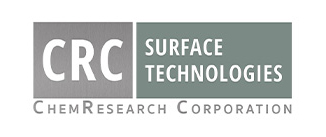
29 Apr Phosphate Coatings: Types and Applications
When working with steel parts that require additional treatment, phosphate coatings are a metal finishing standard. They can provide corrosion resistance, lubrication, or a base color to steel components. Multiple types of phosphate coatings are available for different manufacturing purposes, and CRC can provide any type of phosphate coating you need.
What Are Phosphate Coatings?
Also known as phosphate conversion coatings, phosphate coatings are chemical reactions that use the underlying base metal to create a non-metallic, crystalline surface. The reaction begins with an acidic solution containing phosphate salts and positively charged ions that workers apply through submersion, spraying, or sponging. The application method will vary depending on the coating type.
Phosphate coating can:
- Increase corrosion resistance
- Provide lubrication or heat absorption
- Promote adhesion
- Improve wear resistance
- Facilitate cold-forming
- Enhance appearance
However, different types of phosphate coatings using zinc, iron, or manganese can provide various benefits, and each requires different application methods. Here at CRC, we offer both manganese and zinc phosphate treatments to meet our clients’ needs.
Manganese Phosphates
Manufacturers use manganese phosphate coatings primarily for improving the wear resistance, corrosion resistance, and lubricity of the treated parts. This coating limits metal-to-metal contact and reduces wear on moving parts in engines and other machines. It provides the hardest surface and the highest corrosion and wear resistance of all phosphate coatings.
Manganese phosphates are typically applied through immersion in an acid bath charged at 10 percent by volume. The operating temperatures for the baths can vary, but generally, they must fall within a range of 195°F to 205°F.
Zinc Phosphates
There are three primary zinc phosphate coating types: heavy zinc phosphate, calcium-modified zinc phosphate, and cold-forming phosphates.
- Heavy zinc phosphates retain the oils and waxes that prevent rust. The heavy coating acts as an absorbent substrate that provides substantial protection against corrosion. It may only be applied through an acid bath immersion.
- Calcium-modified zinc phosphates, applied via immersion or spraying, generally act as a base for paint or other organic coatings, because the calcium deposits alongside the zinc act as a built-in grain refiner. This provides adhesion properties without the absorption of a heavy zinc coating. This coating’s chemical-resistant properties also limit corrosion to a confined area when a contaminant damages the applied topcoat. Accordingly, this helps manufacturers prepare military vehicles and equipment for service with mil-spec CARC coatings and offers some protection from biological and chemical warfare.
- Cold-forming phosphate coatings, applied via immersion, are designed to retain lubrication despite extreme heat or extreme pressure. This coating is useful for metal drawing, cold heading, stamping, and extruding processes that rely on heat or extreme pressure. Cold-forming phosphate coatings result in faster drawing time and longer tool life.
Do You Need Phosphate Coating Services?
Finally, if you need phosphate treatments for steel components in the southwest, contact the experts at Chem Research Co. We have proudly provided metal finishing services to aerospace, defense, medical, electronic, and heavy equipment manufacturers for almost 70 years. Call us today at 602-253-4175 or 877-457-5283 to learn more or get a quote.
Photo by Robert Thiemann on Unsplash.

